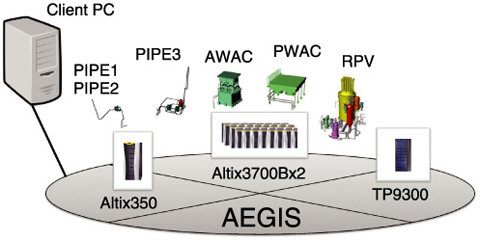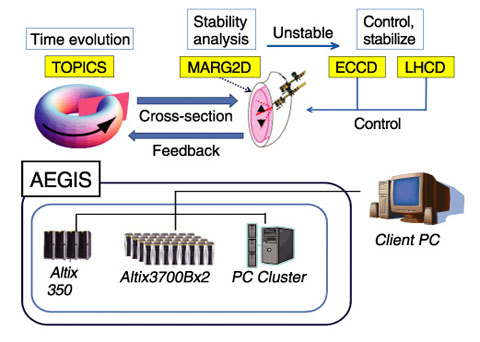
Fig.12-2 Seismic simulation for nuclear power plants

Fig.12-3 Integrated nuclear fusion simulation
Nuclear energy simulations, which deal with complicated physical phenomena, require large-scale calculation and an enormous amount of data, and are difficult to carry out with a supercomputer. For example, when we verify the structural safety of nuclear power plants (NPPs) against earthquakes, we need to handle entire NPPs consisting of over 10 million components. By cooperative execution of programs that analyze each respective component (element programs), we can analyze physical phenomena such as local deformations by the interaction between parts, which had been difficult to realize using conventional component analysis technology.
To implement such simulations, we combined several supercomputers and constructed a virtual large-scale supercomputer named AEGIS. We then developed a technology for automatic control of executing cooperative/integrated programs.
The flexibility of continuing to execute element programs according to the situation is important for executing a large-scale cooperative or integrated program which requires several weeks of calculation using AEGIS. For example, because supercomputers are shared by many users, each program can be executed for only half a day. Therefore an automatic restart function is necessary when the execution of programs ends according to the limit in the execution time. Moreover when supercomputers stop for maintenance or unexpected trouble, or when execution waiting is necessary because of a high average load, a function for migrating to other supercomputers is also necessary. In AEGIS, we have implemented a function which can automatically re-execute a program based on judgement of whether or not a program has been interrupted, etc., and succeeded in implementing long-time execution of cooperative/integrated programs.
Here we show two examples. A full-scale three-dimensional vibration simulator divides facilities into several sections and concurrently computes earthquake resistance. Then the results are integrated and the earthquake resistance of a whole facility is analyzed (Fig.12-2). In integrated nuclear fusion simulation, because the stabilizing process is carried out when burning plasma approaches an instability, the execution of the element program changes according to the state of the plasma (Fig.12-3). For long-time execution of these cooperative programs, substantial modifications of the element programs were required with previous technologies. With our new technology, what previously required 100000 lines of programming has been reduced to 100 lines. This outcome can be expected to contribute to not only reducing execution time and labor saving in execution, but also to shortening the development period for the programs.
<Previous: 12 Computational Science and E-Systems Research | Next: 12-2 >